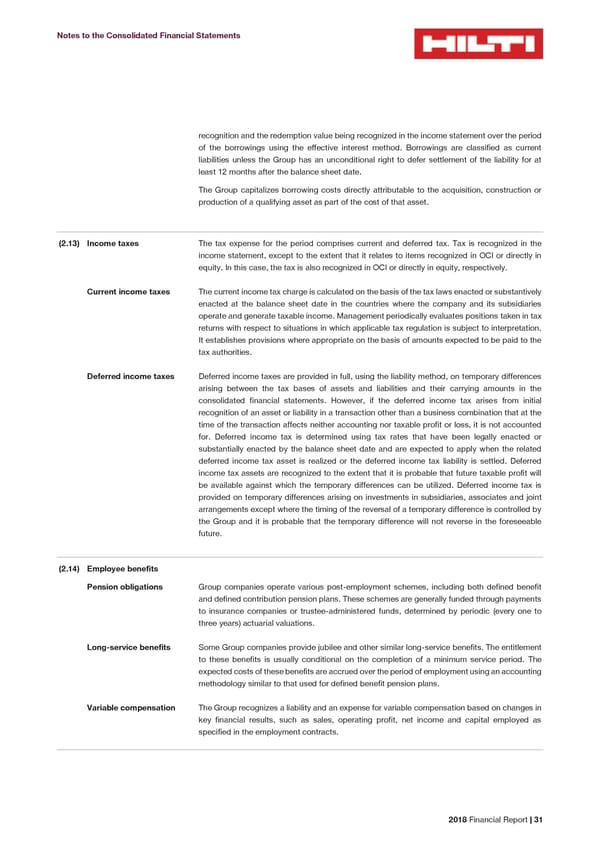Notes to the Consolidated Financial Statements recognition and the redemption value being recognized in the income statement over the period of the borrowings using the effective interest method. Borrowings are classified as current liabilities unless the Group has an unconditional right to defer settlement of the liability for at least 12 months after the balance sheet date. The Group capitalizes borrowing costs directly attributable to the acquisition, construction or production of a qualifying asset as part of the cost of that asset. (2.13) Income taxes The tax expense for the period comprises current and deferred tax. Tax is recognized in the income statement, except to the extent that it relates to items recognized in OCI or directly in equity. In this case, the tax is also recognized in OCI or directly in equity, respectively. Current income taxes The current income tax charge is calculated on the basis of the tax laws enacted or substantively enacted at the balance sheet date in the countries where the company and its subsidiaries operate and generate taxable income. Management periodically evaluates positions taken in tax returns with respect to situations in which applicable tax regulation is subject to interpretation. It establishes provisions where appropriate on the basis of amounts expected to be paid to the tax authorities. Deferred income taxes Deferred income taxes are provided in full, using the liability method, on temporary differences arising between the tax bases of assets and liabilities and their carrying amounts in the consolidated financial statements. However, if the deferred income tax arises from initial recognition of an asset or liability in a transaction other than a business combination that at the time of the transaction affects neither accounting nor taxable profit or loss, it is not accounted for. Deferred income tax is determined using tax rates that have been legally enacted or substantially enacted by the balance sheet date and are expected to apply when the related deferred income tax asset is realized or the deferred income tax liability is settled. Deferred income tax assets are recognized to the extent that it is probable that future taxable profit will be available against which the temporary differences can be utilized. Deferred income tax is provided on temporary differences arising on investments in subsidiaries, associates and joint arrangements except where the timing of the reversal of a temporary difference is controlled by the Group and it is probable that the temporary difference will not reverse in the foreseeable future. (2.14) Employee benefits Pension obligations Group companies operate various post-employment schemes, including both defined benefit and defined contribution pension plans. These schemes are generally funded through payments to insurance companies or trustee-administered funds, determined by periodic (every one to three years) actuarial valuations. Long-service benefits Some Group companies provide jubilee and other similar long-service benefits. The entitlement to these benefits is usually conditional on the completion of a minimum service period. The expected costs of these benefits are accrued over the period of employment using an accounting methodology similar to that used for defined benefit pension plans. Variable compensation The Group recognizes a liability and an expense for variable compensation based on changes in key financial results, such as sales, operating profit, net income and capital employed as specified in the employment contracts. 2018 Financial Report | 31
 2018 Financial Report Page 32 Page 34
2018 Financial Report Page 32 Page 34